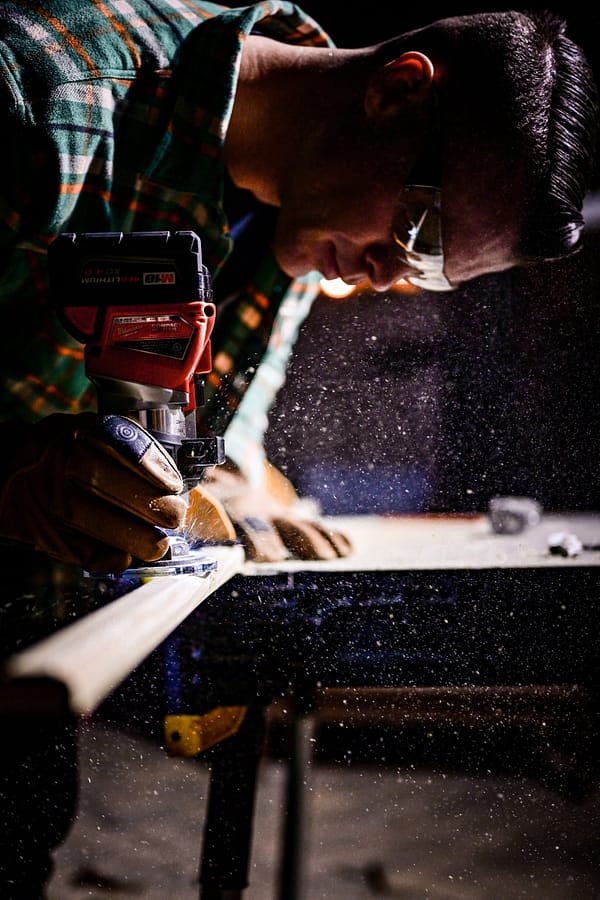So you’ve decided to take on a DIY project, huh? While the idea of tackling a task yourself can be exciting and rewarding, it’s not without its fair share of challenges and it is only natural to consider what are the 10 biggest Challenges For DIY Projects? From navigating unfamiliar territory to dealing with unexpected setbacks, DIY projects can test your patience, skills, and resourcefulness. In this article, we’ll explore the 10 Biggest Challenges For DIY Projects that DIY enthusiasts often face and offer tips on how to overcome them. So buckle up, grab your toolbox, and let’s get ready to conquer those 10 DIY challenges together!
1. Lack of Experience and Knowledge
1.1. Difficulty in Understanding Instructions
One of the major challenges of taking on a do-it-yourself (DIY) project is the lack of experience and knowledge. As a beginner, it can be difficult to fully understand and interpret the instructions provided in DIY manuals or online tutorials. This can lead to misunderstandings or misinterpretations, resulting in mistakes and errors during the project. It is important to carefully read and comprehend the instructions, and if necessary, seek clarification from experts or more experienced individuals.
1.2. Lack of Technical Skills
Another obstacle often faced in DIY projects is the lack of technical skills. Many projects, such as electrical or plumbing work, require specific technical knowledge and expertise. Without proper training or experience in these fields, it can be challenging to successfully complete such tasks. Engaging in projects beyond your skill level not only puts you at risk but also can result in subpar workmanship or failure to achieve the desired outcome. It is crucial to accurately assess your own abilities and seek professional assistance when necessary.
1.3. Limited Knowledge of Materials and Tools
Additionally, insufficient knowledge about the materials and tools required for a DIY project can hinder progress. Different projects demand specific materials and tools, and without proper understanding, you may choose the wrong materials or use the tools incorrectly. This can lead to inefficiencies, additional expenses, and potentially compromising the quality of the final result. Educating yourself about the appropriate materials and tools through research or seeking advice from experts can help overcome this challenge.
2. Time and Commitment
2.1. Insufficient Time
One of the most common hurdles faced in DIY projects is the lack of sufficient time. Balancing work, family, and other commitments can make it difficult to dedicate the necessary time to complete a project. Underestimating the time required for each step or encountering unforeseen obstacles can further contribute to delays. To overcome this challenge, it is important to carefully plan and allocate dedicated time for each aspect of the project, as well as anticipate potential delays or setbacks.
2.2. Project Delays
Closely related to insufficient time is the challenge of project delays. Various factors, such as unexpected issues, weather conditions, or unavailability of specific materials, can cause delays in the completion of DIY projects. These delays can be frustrating and may disrupt other plans or commitments. It is crucial to be adaptable and patient in these situations, and have contingency plans in place to mitigate the impact of such delays.
2.3. Lack of Commitment
Taking on a DIY project requires a significant level of commitment. Many projects require consistent effort over an extended period of time, and it is common to encounter challenges and hurdles along the way. The lack of commitment can result in unfinished or substandard work. To address this challenge, it is important to set realistic goals, break the project into manageable tasks, and maintain a dedicated mindset throughout the process.

3. Safety Risks
3.1. Inadequate Safety Precautions
Safety should always be a top priority in any DIY project, yet it is often overlooked or underestimated. Inadequate knowledge of safety precautions can result in accidents, injuries, or even long-term health risks. It is crucial to thoroughly research and understand the necessary safety measures for each specific project, and invest in appropriate safety equipment and protective gear. Additionally, seeking expert guidance or training in handling potentially dangerous tools or materials is essential to minimize the risk of accidents.
3.2. Handling Hazardous Materials
Certain DIY projects may involve the use of hazardous materials, such as chemicals, solvents, or asbestos. Improper handling, storage, or disposal of these substances can pose significant health and environmental risks. It is vital to educate yourself about the specific hazards associated with the materials you are working with, and follow appropriate safety guidelines and regulations. If in doubt, consult professionals or specialists who can provide guidance on proper handling and disposal procedures.
3.3. Risk of Injury
Engaging in DIY projects without proper safety precautions increases the risk of injury. Falling from ladders, getting caught in machinery, or accidentally cutting yourself are just a few potential hazards. It is essential to take the necessary precautions, use protective equipment, and maintain a cautious approach throughout the project. In situations where the risk of injury is excessively high, it may be prudent to consider hiring professionals or seeking expert assistance.
4. Budget Constraints
4.1. Underestimating Costs
Budget constraints are a common challenge faced in DIY projects. It is often easy to underestimate the costs involved, especially when considering materials, tools, and unforeseen expenses. Without accurate budget planning, you may find yourself exceeding your financial limits or compromising the quality of the project. It is crucial to research and calculate the costs of materials, tools, and any additional expenses before initiating a DIY project. Consider consulting experts or experienced individuals who can provide insights into the potential costs involved.
4.2. Inefficient Spending
Even with a well-planned budget, inefficient spending can lead to financial challenges during a DIY project. Impulsive purchases, unnecessary tools, or overbuying materials can result in wastage and additional expenses. It is important to carefully evaluate your needs, prioritize essential purchases, and consider borrowing or renting equipment that may be required for a specific project. By making thoughtful and efficient spending choices, you can optimize your budget and minimize financial constraints.
4.3. Unexpected Expenses
DIY projects often come with unexpected expenses that can strain the budget. Unforeseen issues, hidden damages, or the need for additional materials or services can significantly impact the overall cost. It is crucial to allocate a contingency fund in your budget to account for such unexpected expenses. This will provide flexibility and ensure that you are prepared to handle any unforeseen costs that may arise during the course of the project.

5. Complexity of Projects
5.1. Difficulty Level
The complexity of DIY projects can vary greatly, and it is important to assess the difficulty level before undertaking a task. Underestimating the complexity can result in frustration, errors, and substandard outcomes. It is necessary to evaluate your own skillset, technical knowledge, and experience to determine if a particular project aligns with your capabilities. If the project exceeds your skill level, it may be advisable to seek help or consult professionals to ensure a successful outcome.
5.2. Complicated Steps
DIY projects often involve a series of steps, and some projects may have particularly intricate or complicated processes. Misinterpreting or skipping important steps can lead to costly mistakes or unsafe conditions. It is crucial to carefully read instructions, watch tutorials, or consult experts who can guide you through the process. Breaking down complex steps into smaller, manageable tasks can also help simplify the overall project and make it more achievable.
5.3. Need for Specialized Knowledge
Certain DIY projects require specialized knowledge or expertise in specific fields. For example, installing electrical wiring or plumbing systems necessitates a deep understanding of technical and safety requirements. Lack of specialized knowledge can jeopardize the integrity and safety of the project. It is essential to recognize your limitations and seek professional guidance or assistance in areas that require specialized skills. This will ensure that the project is completed successfully and meets the necessary standards.
6. Lack of Tools and Equipment
6.1. Unavailability of Tools
One of the challenges faced by DIY enthusiasts is the unavailability of required tools. Some projects may demand specialized or expensive tools that are not readily accessible. Limited availability can significantly impede progress and hinder the successful completion of a project. Researching alternative tools, considering borrowing or renting options, or exploring DIY community groups can help overcome this challenge to some extent. Investing in essential tools, as per your projects’ requirements, can also be a wise long-term strategy.
6.2. Limited Access to Equipment
In addition to tools, certain DIY projects may require access to heavy machinery or equipment that is not easily accessible to individuals. For instance, landscaping or construction projects often involve the use of heavy-duty machinery. Limited access to such equipment can restrict the scope and capability of DIY projects. Exploring local rental services, collaborating with like-minded individuals, or considering shared access options can help overcome this challenge and enable the completion of more ambitious projects.
6.3. Need to Purchase or Rent Tools
In some instances, a DIY project may require the purchase or rental of specific tools that are not part of your existing toolkit. Acquiring these tools can add to the overall budget and resource requirement of the project. It is important to carefully consider whether purchasing the tools is a necessity or if renting them from specialized services is a more cost-effective option. Evaluating the frequency of tool usage and longevity of the project can inform the decision-making process.
7. Emotional and Mental Stress
7.1. Frustration and Overwhelm
DIY projects, particularly those with complex or time-consuming tasks, can generate feelings of frustration and overwhelm. Encounter difficult challenges or encountering setbacks may intensify these emotions. It is crucial to recognize that DIY projects are often a learning process and allow room for trial and error. Taking breaks, seeking support from friends or online communities, and celebrating small victories along the way can help manage feelings of frustration and prevent burnout.
7.2. Lack of Motivation
Maintaining motivation throughout a DIY project can be challenging, especially when faced with unforeseen obstacles or a lack of progress. It is important to set realistic goals and break the project into smaller, achievable tasks to maintain a sense of accomplishment. Regularly reminding yourself of the purpose and desired outcome of the project can also help boost motivation. Additionally, working with a partner or involving friends and family members can provide encouragement and support, making the project more enjoyable.
7.3. Decision Fatigue
DIY projects often require numerous decisions to be made, ranging from material choices to design options. Making a large number of decisions within a limited timeframe can lead to decision fatigue, which can negatively impact the quality and progress of the project. Prioritizing decisions, seeking inspiration from other projects, or consulting professionals for guidance can help alleviate decision fatigue. Breaking larger decisions into smaller, manageable choices can also make the decision-making process less overwhelming.
8. Quality and Professionalism
8.1. Inferior Quality of Work
Achieving a level of quality comparable to professional work is often challenging in DIY projects. Lack of experience, technical skills, or access to specialized tools can impact the overall quality of the final outcome. It is important to be realistic about your capabilities and set reasonable expectations. Seeking professional advice for critical aspects of the project, investing in high-quality materials, and continuously improving your skills can help elevate the quality of your DIY work over time.
8.2. Difficulty in Achieving Professional Finish
Even with adequate technical skills, achieving a professional finish can be difficult in DIY projects. Attention to detail, finesse, and specialized techniques are often required to attain a polished end result. Continuous practice, learning from experts, or attending workshops can help develop the necessary skills to achieve a more professional finish. Embracing imperfections and considering them as part of the DIY charm can also help overcome the challenge of achieving a flawless result.
8.3. Lack of Warranty or Guarantee
Unlike professional services or products, DIY projects typically do not come with warranties or guarantees. This lack of assurance can be a disadvantage, especially if the project involves significant financial investment or potential risks. It is important to thoroughly research and select reliable materials or products with favorable reviews and ratings. Additionally, proper maintenance and regular inspections of DIY projects can help identify issues early on and prevent them from escalating into major problems.
9. Lack of Support and Guidance
9.1. Limited Help Available
Engaging in a DIY project can sometimes feel isolating and overwhelming, especially when you lack access to a support system. The absence of individuals who can provide assistance, advice, or guidance can hinder progress and diminish the overall experience. Networking with other DIY enthusiasts, joining relevant online communities or local groups, and sharing experiences can help overcome the challenge of limited help availability. Additionally, exploring video tutorials or DIY forums can provide valuable insights and guidance.
9.2. Lack of Expert Advice
Certain DIY projects may require expert advice or consultation, particularly in specialized fields such as construction, electrical work, or plumbing. The absence of reliable experts to turn to can make it difficult to effectively troubleshoot issues or seek professional recommendations. It is important to build relationships with local professionals, attend trade shows or workshops, or even consider hiring consultants for specific project requirements. Utilizing their expertise and experience can enhance the quality and success of your DIY endeavors.
9.3. Absence of Mentorship
Lack of mentorship is another challenge faced by individuals who embark on DIY projects. Having a mentor who can guide you through the learning process, provide feedback, and share their experiences can significantly accelerate your growth and success as a DIY enthusiast. It can be beneficial to connect with experienced individuals within your local community, through online platforms, or even by reaching out to professionals in your respective field of interest. Their knowledge and mentorship can help you navigate challenges and achieve better results in your DIY projects.
10. Project Scope and Scaling
10.1. Underestimation of Project Scope
Underestimating the scope of a DIY project is a common challenge. A seemingly simple task can quickly escalate, requiring additional effort, time, and resources. Without proper planning and assessment, this underestimation can lead to frustration, delays, or unfinished projects. It is crucial to thoroughly evaluate the project and anticipate potential challenges or requirements. Breaking down the project into smaller tasks and regularly reviewing the scope can help manage expectations and ensure a more realistic approach.
10.2. Inability to Scale or Expand Project
In some instances, DIY projects may involve a desire to scale or expand the initial scope. However, limitations in resources, skills, or space can pose challenges when attempting to broaden the project. It is important to evaluate your readiness and capability to handle expansions or modifications. Seeking expert advice, researching similar projects, or seeking out relevant workshops or courses can provide guidance and enhance your ability to successfully scale or expand your DIY endeavors.
10.3. Difficulty in Integration with Existing Structures
DIY projects that involve integrating new elements with existing structures, such as home renovations or landscaping, can present significant challenges. Ensuring the seamless integration of new components with the original structures can require technical know-how and aesthetic finesse. Lack of experience or knowledge in this aspect can result in poor visual cohesion or structural stability. Consulting with professionals in the respective fields or considering hiring experts can facilitate a more successful integration and enhance the overall outcome of the project.
In conclusion, DIY projects offer numerous benefits, including the opportunity to learn new skills, save money, and add a personal touch to your endeavors. However, various challenges can arise during these projects that necessitate careful planning, research, and the willingness to seek assistance when needed. By acknowledging and addressing the challenges related to lack of experience and knowledge, time and commitment, safety risks, budget constraints, complexity of projects, tools and equipment availability, emotional and mental stress, quality and professionalism, support and guidance, and project scope and scaling, you can increase the chances of successfully completing your DIY projects while minimizing setbacks and frustrations.












